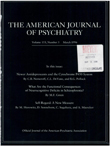Does ECT alter brain structure?
Abstract
OBJECTIVE: The purpose of this study was to evaluate whether ECT causes structural brain damage. METHOD: The literature review covered the following areas: cognitive side effects, structural brain imaging, autopsies of patients who had received ECT, post-mortem studies of epileptic subjects, animal studies of electroconvulsive shock (ECS) and epilepsy, and the neuropathological effects of the passage of electricity, heat generation, and blood-brain barrier disruption. RESULTS: ECT-induced cognitive deficits are transient, although spotty memory loss may persist for events immediately surrounding the ECT course. Prospective computerized tomography and magnetic resonance imaging studies show no evidence of ECT-induced structural changes. Some early human autopsy case reports from the unmodified ECT era reported cerebrovascular lesions that were due to agonal changes or undiagnosed disease. In animal ECS studies that used a stimulus intensity and frequency comparable to human ECT, no neuronal loss was seen when appropriate control animals, blind ratings, and perfusion fixation techniques were employed. Controlled studies using quantitative cell counts have failed to show neuronal loss even after prolonged courses of ECS. Several well-controlled studies have demonstrated that neuronal loss occurs only after 1.5 to 2 hours of continuous seizure activity in primates, and adequate muscle paralysis and oxygenation further delay these changes. These conditions are not approached during ECT. Other findings indicate that the passage of electricity, thermal effects, and the transient disruption of the blood- brain barrier during ECS do not result in structural brain damage. CONCLUSIONS: There is no credible evidence that ECT causes structural brain damage.
Access content
To read the fulltext, please use one of the options below to sign in or purchase access.- Personal login
- Institutional Login
- Sign in via OpenAthens
- Register for access
-
Please login/register if you wish to pair your device and check access availability.
Not a subscriber?
PsychiatryOnline subscription options offer access to the DSM-5 library, books, journals, CME, and patient resources. This all-in-one virtual library provides psychiatrists and mental health professionals with key resources for diagnosis, treatment, research, and professional development.
Need more help? PsychiatryOnline Customer Service may be reached by emailing [email protected] or by calling 800-368-5777 (in the U.S.) or 703-907-7322 (outside the U.S.).



